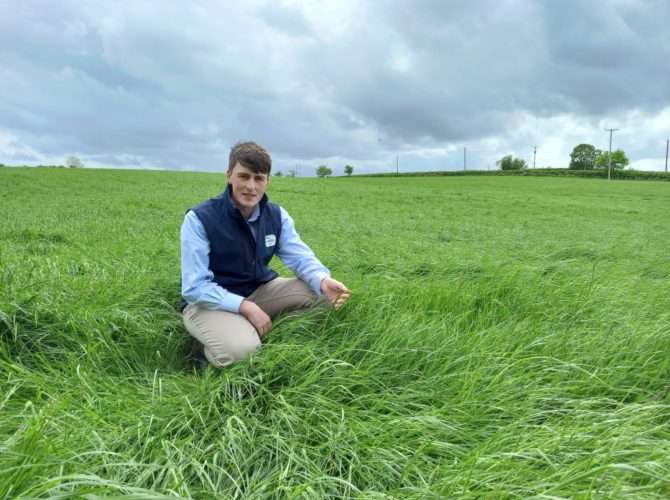Growing More Grass Through Reseeding.
5th April 2023

Reseeding grassland will bring advantages to all farmers with not only improved yields and quality of grass but also an improved response to fertiliser nitrogen. Reseeds yield 20-40% more than older pastures with much of this extra growth produced in the shoulders of the season. Silage quality also improves with perennial grasses being more nutritious with higher Digestibility and Protein levels.
The first step is identifying swards which would benefit from reseeding. Look at Selecting poorer preforming fields and those with low levels of desirable species such as perennial ryegrass. Perennial ryegrass is the main productive species in swards, and it can be identified through the red/purple colour at the stem base with folded leaves emerging from the leaf sheath. Swards consisting of less than 65% perennial ryegrass will have significantly reduced performance and remedial action should be considered to increase this level. Anything less than 50% perennial ryegrass would require a full reseed.
Reseeding in the spring with increasing soil temperatures and sunshine allows the new sward to get off to the best start. The reseed should ideally be grazed multiple times to encourage tillering, promoting a dense sward of grass, which will help persistency and weed control in the long run.
Before sowing new grass, it is vital to ensure conditions in the field are optimum for the sward establishment, including soil fertility and correction of any compaction or drainage issues. Soil fertility can be determined from soil analysis. The soil should be a minimum of 6.3 pH for grass establishment and 6.5 pH for mixtures with clover. Phosphorus and Potash indexes need to be a minimum of index 2. Where soil has a phosphorus 2 index, and potash 2 index, 40 units of phosphorus and 48 units of potassium would be required per acre. In terms of Nitrogen 48 units per acre should also be applied to the seedbed.
For a full reseed the sward should be sprayed off using glyphosate and cultivated 7-10 days later with a plough or disc harrow, pH should be corrected with the application of lime and the seedbed prepared in the normal manner to achieve a fine firm seedbed. Fertiliser should then be spread followed by sowing of grass seed, and finally the field should be rolled to ensure good seed soil contact.
One reason farmers choose not to reseed is that the field is out of production, however from glyphosate application until the first grazing will only be around 60 days, and over the rest of the season the increased production will more than compensate for the period of the reseed establishment and lost production. Graze the new sward as soon as the new plants do not pull out of the ground using a tug test.
The Fane Valley Agronomy and Forage team have developed mixtures to suit your needs from silage production on light land to grazing on heavy land and everything in between, using varieties best suited to your farm. To find out more about reseeding call into your local store, contact your Fane Valley representative or call 028 9261 0485.

